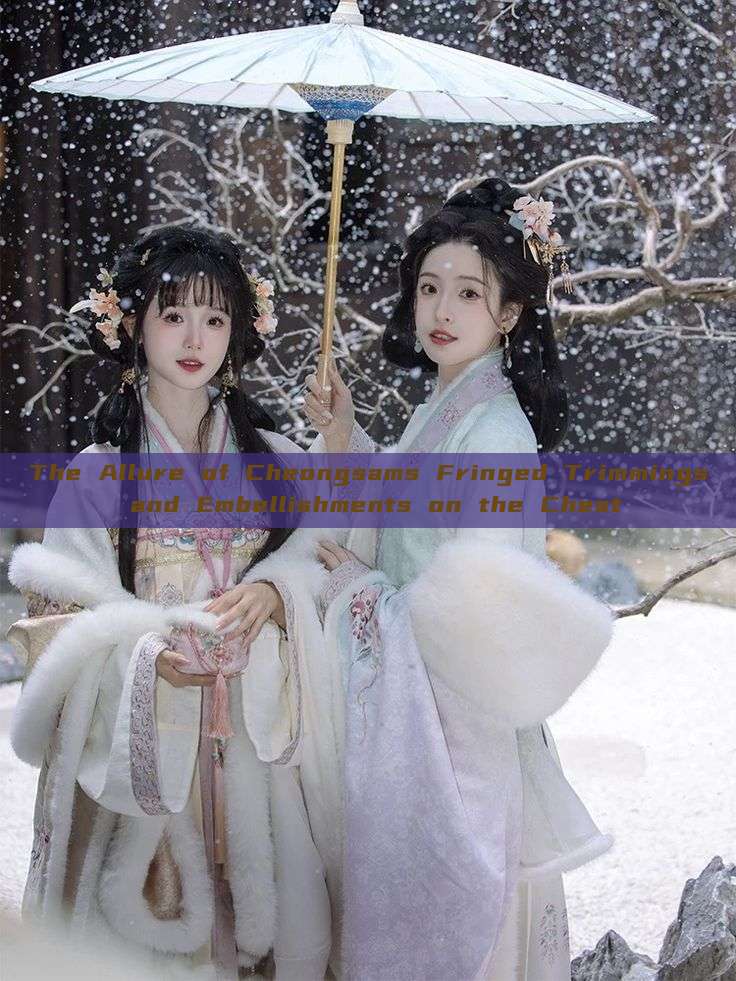In the realm of traditional Chinese attire, the cheongsam—a graceful garment with a rich history—stands out as a symbol of elegance and beauty. Among its intricate designs and vibrant colors, the fringed trimmings and chest Embellishments, particularly the tassel ornaments, are not only visually captivating but also hold significant cultural meanings.

The cheongsam, also known as the qipao in Chinese, is a traditional women's clothing that dates back to the early 20th century. It is characterized by its close-fitting silhouette and intricate details that showcase the wearer's figure. Among these details, the fringed trimmings and chest ornaments add a touch of uniqueness and elegance to the cheongsam.
The fringed trimmings, often made of silk or other luxurious materials, are attached to the edges of the cheongsam and sway gracefully with every movement. These trimmings are not just for decoration; they also serve to enhance the flow of the cheongsam and add a sense of grace to the wearer's movements.
The chest embellishments, on the other hand, are often in the form of tassel ornaments that dangle from the front of the cheongsam. These tassels, also known as liu su in Chinese, are usually made of silk threads and are often adorned with beads, crystals, or other decorative elements. Not only do they add a touch of elegance to the cheongsam, but they also serve as a focal point, drawing attention to the wearer's chest.
The tassel ornaments on the cheongsam hold significant cultural meanings. In traditional Chinese culture, tassels symbolize good luck, prosperity, and protection. By wearing cheongsam with tassel ornaments, women were believed to ward off bad luck and attract good fortune. Additionally, these tassels also served as a status symbol, indicating the wearer's social position and wealth.
The intricate designs and vibrant colors of the fringed trimmings and tassel ornaments on the cheongsam also reflect the rich cultural heritage of China. These designs often incorporate elements from Chinese folklore, mythology, and traditional art forms such as embroidery and beading. The use of vibrant colors and intricate patterns not only adds visual interest but also serves to tell stories and convey cultural values.
Today, the cheongsam has evolved beyond its traditional roots and is worn not only for special occasions but also for everyday wear. The fringed trimmings and tassel ornaments have also undergone changes to accommodate modern tastes and styles. However, despite these changes, the essence of the cheongsam and its intricate details remain unchanged.
The fringed trimmings and tassel ornaments on the cheongsam continue to captivate people not only in China but also across the globe. They not only add a touch of elegance and beauty to the cheongsam but also serve as a bridge to connect people with China's rich cultural heritage. As the cheongsam continues to evolve and gain popularity, its intricate details, especially the fringed trimmings and tassel ornaments, will continue to captivate people's hearts and minds.






